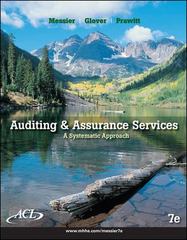Question
1) A) What is the present value on January 1, 2016, of $30,000 due on January 1, 2020, and discounted at 10% compounded annually? B)
1)
A) What is the present value on January 1, 2016, of $30,000 due on January 1, 2020, and discounted at 10% compounded annually?
B) What is the present value on January 1, 2016, of $40,000 due on January 1, 2020, and discounted at 11% compounded semiannually?
C) What is the present value on January 1, 2016, of $50,000 due on January 1, 2020, and discounted at 16% compounded quarterly?
2) At the beginning of 2018, Ace Company had the following portfolio of investments in available-for-sale debt securities (all of which were acquired at par value):
| Security | Cost | 1/1/18 Fair Value |
|---|---|---|
| A | $45,000 | $56,000 |
| B | 68,000 | 65,000 |
| Totals | $113,000 | $121,000 |
During 2018, the following transactions occurred:
| May 3 | Purchased C debt securities at their par value for $50,000. |
| July 1 | Sold all of the A securities for $56,000 plus interest of $1,000. |
| Dec. 31 | Received interest of $1,000 on the B and C securities. Additionally the following information was available: |
| Security | 12/31/18 Fair Value |
|---|---|
| B | $75,000 |
| C | 53,000 |
Required:
| 1. | Prepare journal entries to record the preceding information. |
| 2. | What is the balance in the Unrealized Holding Gain/Loss account on December 31, 2018? |
| 3. Next Level What justification does the FASB give for its treatment of unrealized holding gains and losses for available-for-sale securities?
|
Step by Step Solution
There are 3 Steps involved in it
Step: 1

Get Instant Access to Expert-Tailored Solutions
See step-by-step solutions with expert insights and AI powered tools for academic success
Step: 2

Step: 3

Ace Your Homework with AI
Get the answers you need in no time with our AI-driven, step-by-step assistance
Get Started


